12 James Webb Space Telescope findings that changed our understanding of the universe in 2023
The James Webb Space Telescope filled us with awe this year. Here's a look back on how.
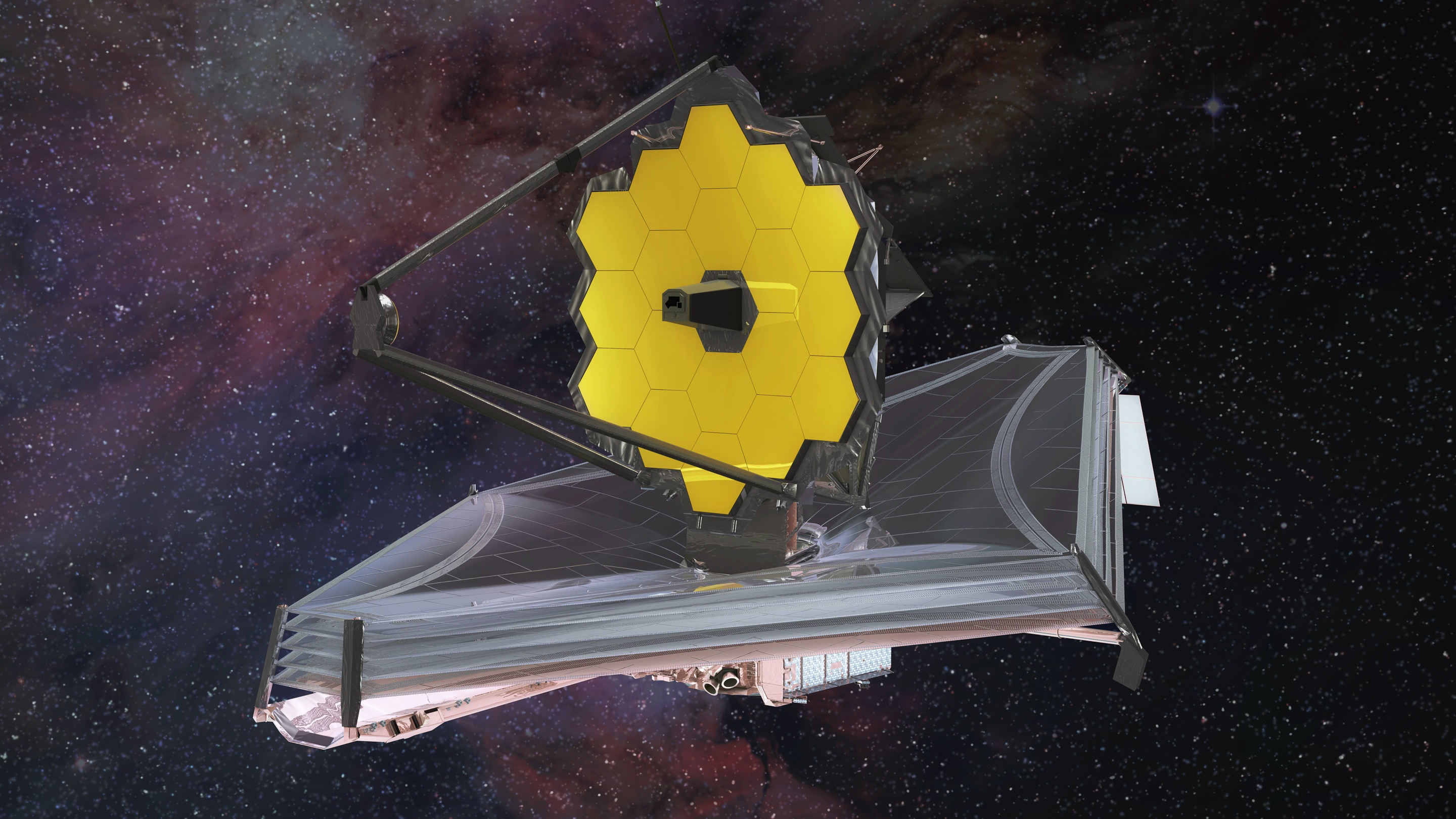
- 1. The JWST takes a fresh look at our solar system
- 2. Nearby exoplanet has abundant life-supporting molecules
- 3. The JWST discovers its smallest object yet
- 4. The JWST finds massive, mysterious galaxies in the infant universe
- 5. An intensifying debate over the universe's expansion rate
- 6. Shining a spotlight on the first supermassive black holes
- 7. Complex organic molecules in a primordial galaxy
- 8. Yup, Maisie's galaxy is among the earliest ever spotted
- 9. The most distant supermassive black hole ever seen
- 10. The JWST rediscovers an ancient ghostly galaxy
- 11. The JWST spots 3 possible fabled "dark stars"
- 12. The earliest galaxies looked surprisingly similar to our Milky Way
On Christmas morning two years ago, astronomers and space fans received the gift they'd been waiting on for 30 years: the launch of the James Webb Space Telescope (JWST), the world's biggest, most daring endeavor to probe the earliest stars and galaxies in the universe.
This year, the space observatory has continued to deliver breathtaking and scientifically valuable images of the cosmos. Here's a look back at the JWST discoveries that altered our understanding of the universe in 2023.
1. The JWST takes a fresh look at our solar system
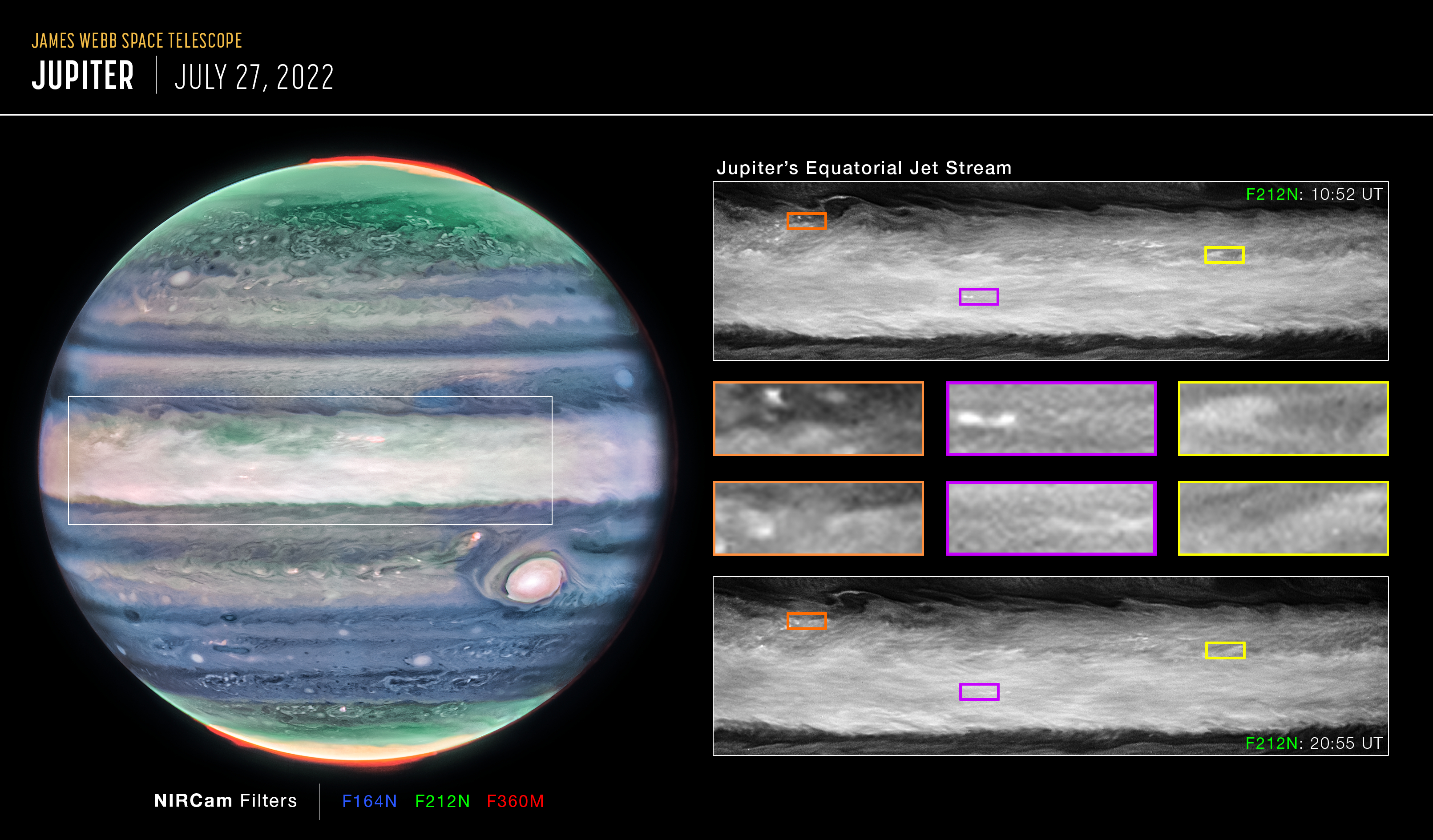
Although the JWST's purpose is to see some of the first stars and galaxies in the universe, its fresh look at our own solar system has been nothing short of breathtaking.
Take this image, which, in October, revealed a high-speed jet stream on Jupiter, previously unseen despite being over 3,000 miles (4,800 kilometers) wide and traveling at about 320 mph (515 km/h).
And back in June, the JWST identified carbon dioxide in the salty liquid oceans of Jupiter's icy moon Europa for the first time. The space observatory also offered a new look at Saturn in this image, which captures the gas giant's delicate ring system and three of its 146 known moons. The gas giant is eerily dark when seen through the JWST's infrared eyes, because in this wavelength, "methane gas absorbs almost all of the sunlight falling on the atmosphere," according to NASA.
The powerful observatory also captured this stunning image of Uranus, its brightest moons and 11 of its 13 known dusty rings.
Read more here: James Webb Space Telescope spots jet stream on Jupiter stronger than a Category 5 hurricane
Get the Space.com Newsletter
Breaking space news, the latest updates on rocket launches, skywatching events and more!
2. Nearby exoplanet has abundant life-supporting molecules
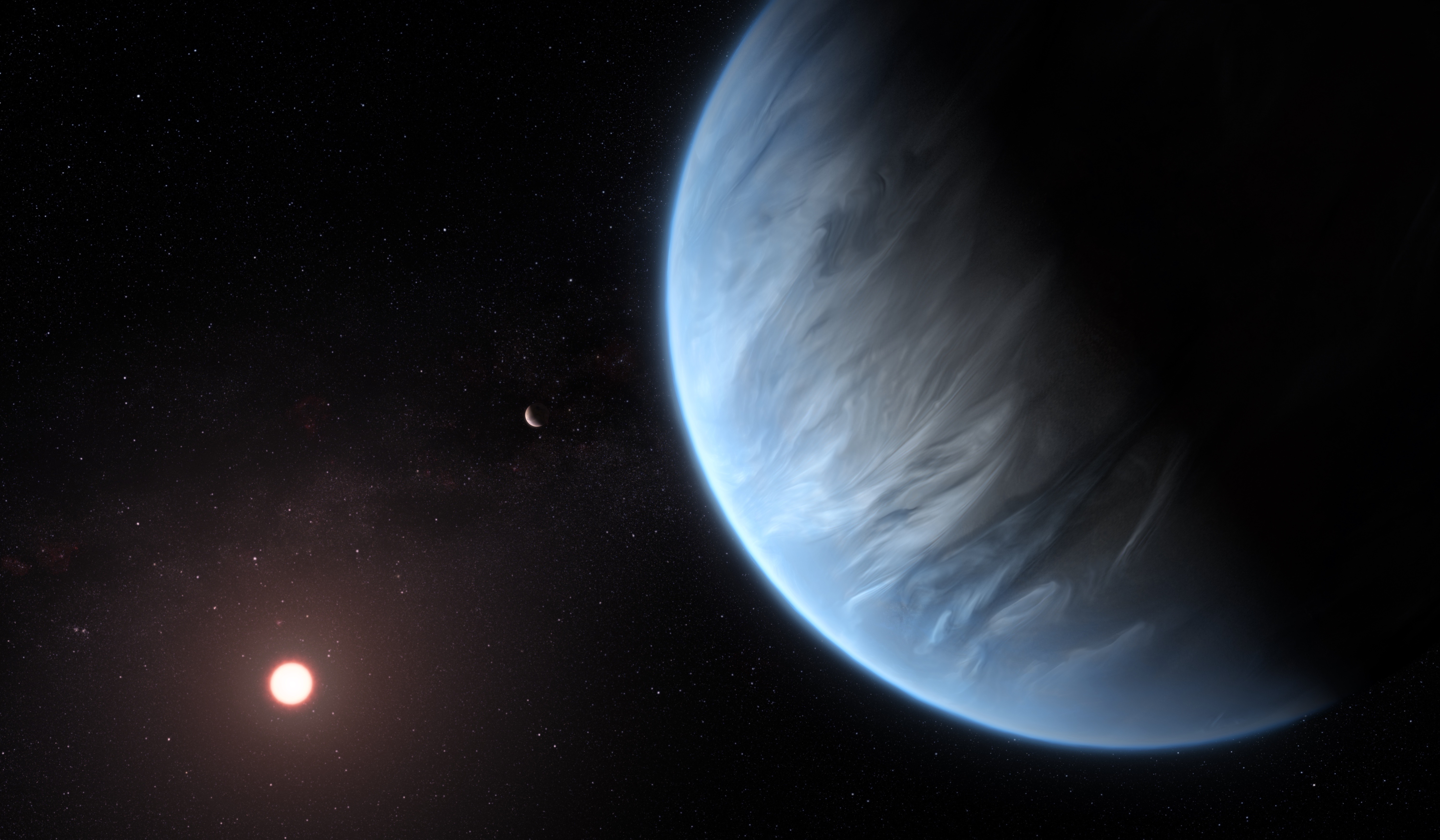
In September, the JWST discovered methane and carbon dioxide in the atmosphere of a fairly nearby exoplanet named K2-18 b, which circles a cool star 120 light-years from Earth and is larger than our planet but smaller than the giant planets in our solar system.
Previous observations with the Hubble Space Telescope had indicated that K2-18 b may be s a "Hycean world," an exoplanet that hosts thick, hydrogen-rich atmospheres with oceans of liquid water underneath. Recent observations with the JWST support that hypothesis, as the new data shows evidence for abundant methane and carbon dioxide but little ammonia.
"These results are the product of just two observations of K2-18 b, with many more on the way," study co-author Savvas Constantinou, an astronomer at the University of Cambridge, said in a statement. "This means our work here is but an early demonstration of what Webb can observe in habitable-zone exoplanets."
Read more here: Exoplanet's surface may be covered in oceans, James Webb Space Telescope finds
3. The JWST discovers its smallest object yet
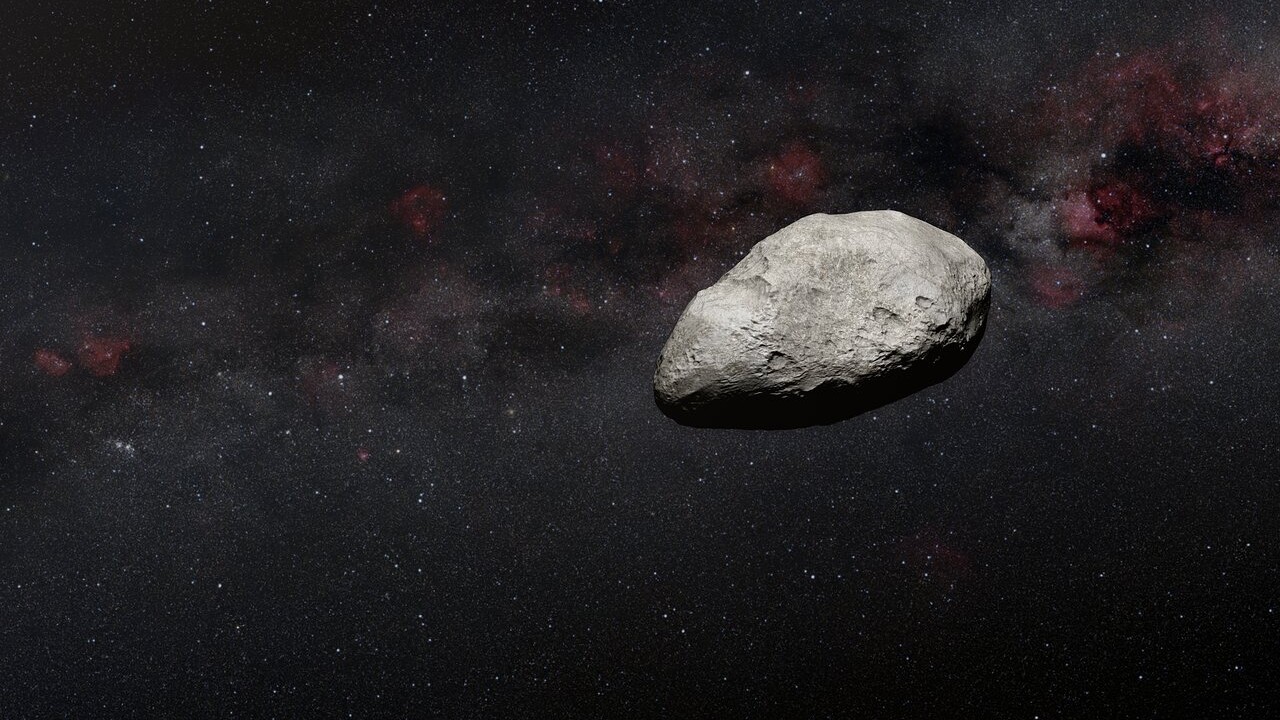
In February, scientists were thrilled with the JWST's unexpected discovery of a small asteroid embedded in the main asteroid belt between Mars and Jupiter. Like most residents of that region, the space rock, which is about as tall as the Washington Monument, is thought to be a remnant of the formation of the solar system and thus contains tantalizing history about its evolution.
Asteroids less than a mile long are difficult to spot with other telescopes, so the find underscored the telescope's usefulness closer to home.
Read more here: The James Webb Space Telescope just found an asteroid by total accident, its smallest object yet
4. The JWST finds massive, mysterious galaxies in the infant universe
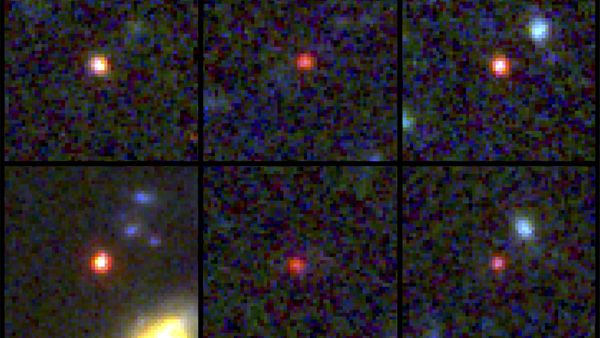
In February, scientists announced the discovery of galaxies as massive as the Milky Way sprinkled across the JWST's images of the universe just 500 million to 700 million years after the Big Bang. From what existing theories and models tell us, the galaxies the JWST found are too big, and the mature red stars in them too old, that the study authors said the find "creates problems for science."
"It calls the whole picture of early galaxy formation into question," study co-author Joel Leja, an astronomer at Penn State, said in a statement.
Read more here: The James Webb Space Telescope discovers enormous distant galaxies that should not exist
5. An intensifying debate over the universe's expansion rate
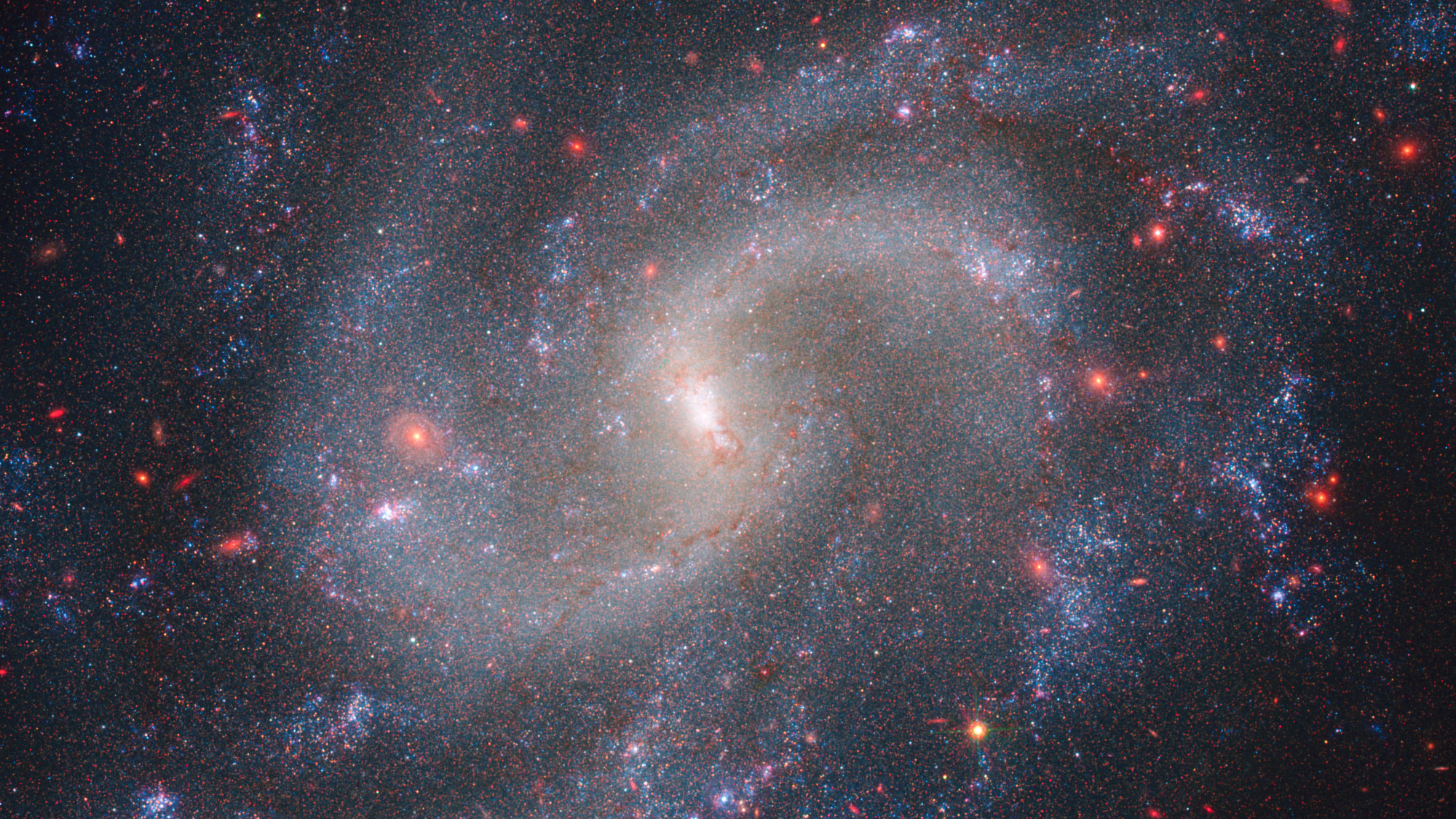
We know that the universe is expanding at an ever-increasing rate, but we don't know precisely how fast. The issue has become a debate centered on resolving the correct value of the Hubble constant, an important number for estimating the universe's expansion rate. Right now, model estimates for the Hubble constant don't agree with values based on telescope observations.
This year, the JWST observed a class of stars known as Cepheid variables, which are usually humongous stars some 100,000 times brighter than the sun and the most reliable source to measure cosmic distances (and thus to tease out the universe's expansion rate). But instead of resolving the debate, the JWST's data only deepened the ongoing debate over the Hubble constant.
"I don't care what the value of the Hubble constant comes out to be," said Adam Riess, an astronomer at Johns Hopkins University and a Nobel laureate. "I want to understand why our best tools — our gold standard tools — are not agreeing with each other."
Read more here: James Webb Space Telescope deepens major debate over universe's expansion rate
6. Shining a spotlight on the first supermassive black holes
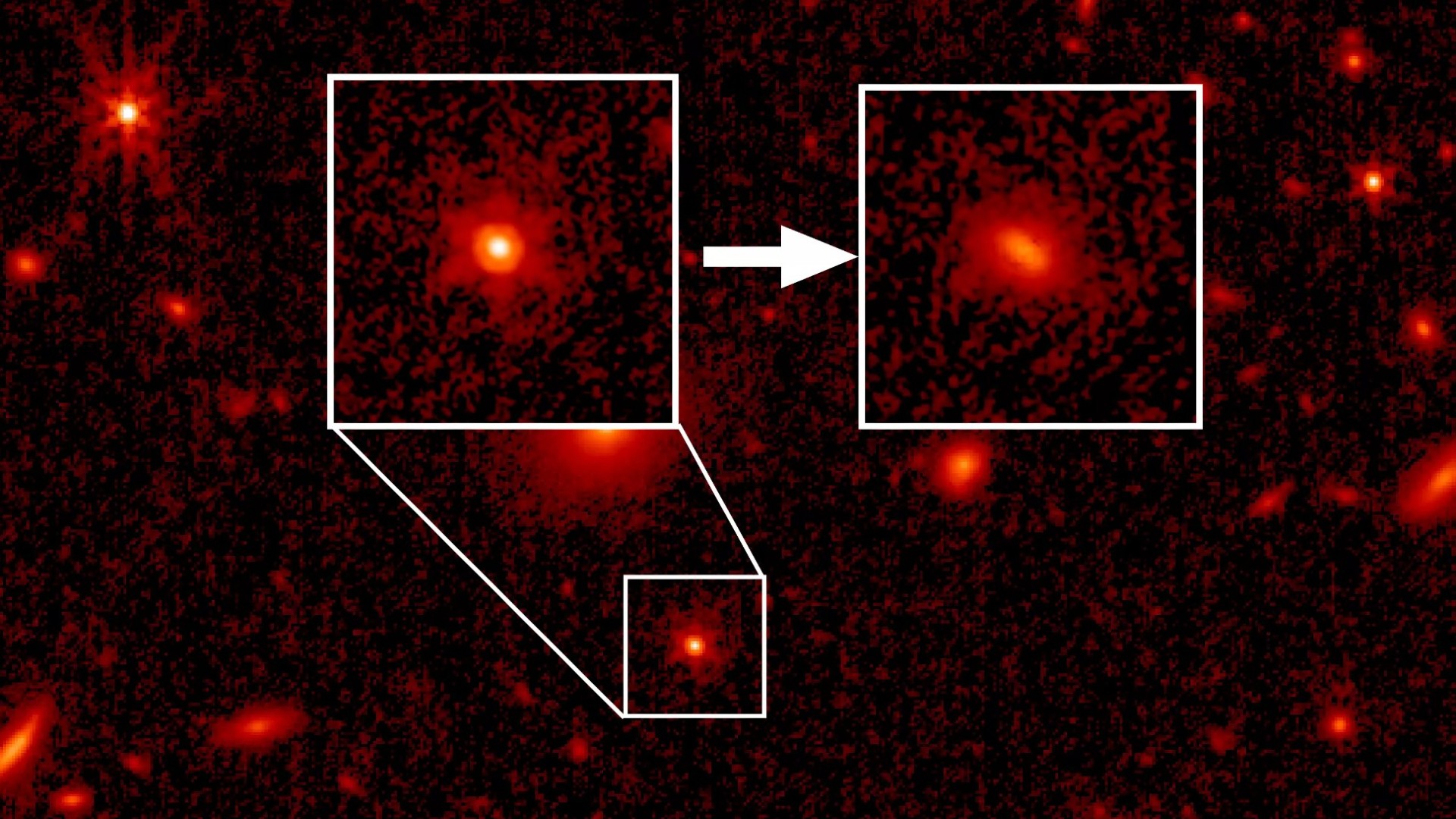
This year, the JWST helped astronomers see starlight from two early galaxies where they think one of the first supermassive black holes emerged. The JWST observed the galaxies as they were when the universe was younger than 1 billion years, showing how, over time, black holes gain unfathomable masses — often millions or billions of times that of the sun.
Read more here: James Webb Space Telescope sees 1st starlight from ancient quasars in groundbreaking discovery
7. Complex organic molecules in a primordial galaxy
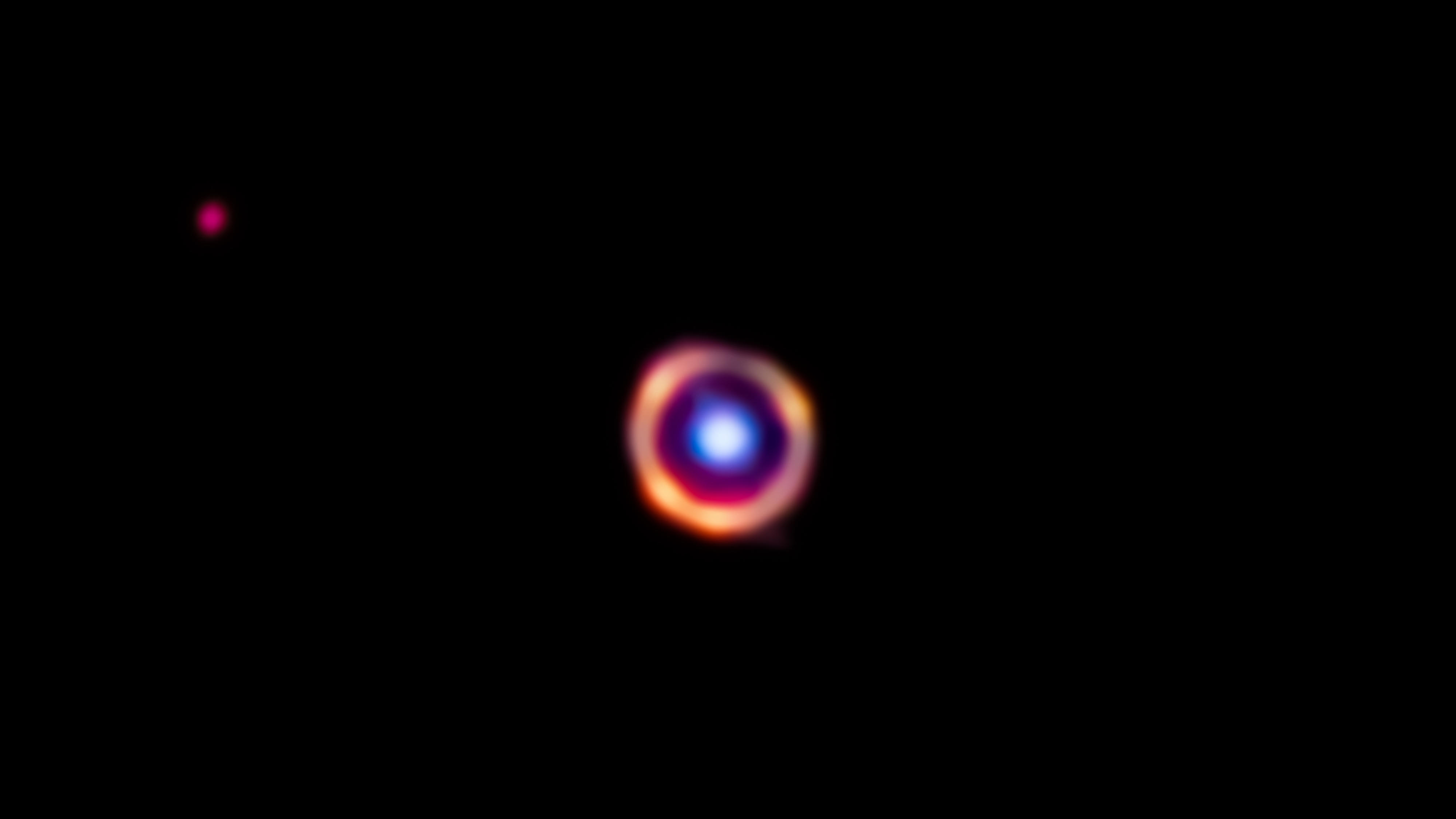
In June, astronomers revealed that the JWST had detected intriguing carbon-based molecules, similar to the ones found in oil and coal deposits on Earth, from over 12 billion years ago, when the universe was just 10% of its current age. In space, these molecules link to minuscule dust grains. Detecting them had been challenging because of the limits of our telescopes. However, "Webb really makes looking for organic molecules look too easy," Justin Spilker, an astronomer at Texas A&M University, told Space.com.
Read more here: James Webb Space Telescope spies earliest complex organic molecules in the universe
8. Yup, Maisie's galaxy is among the earliest ever spotted
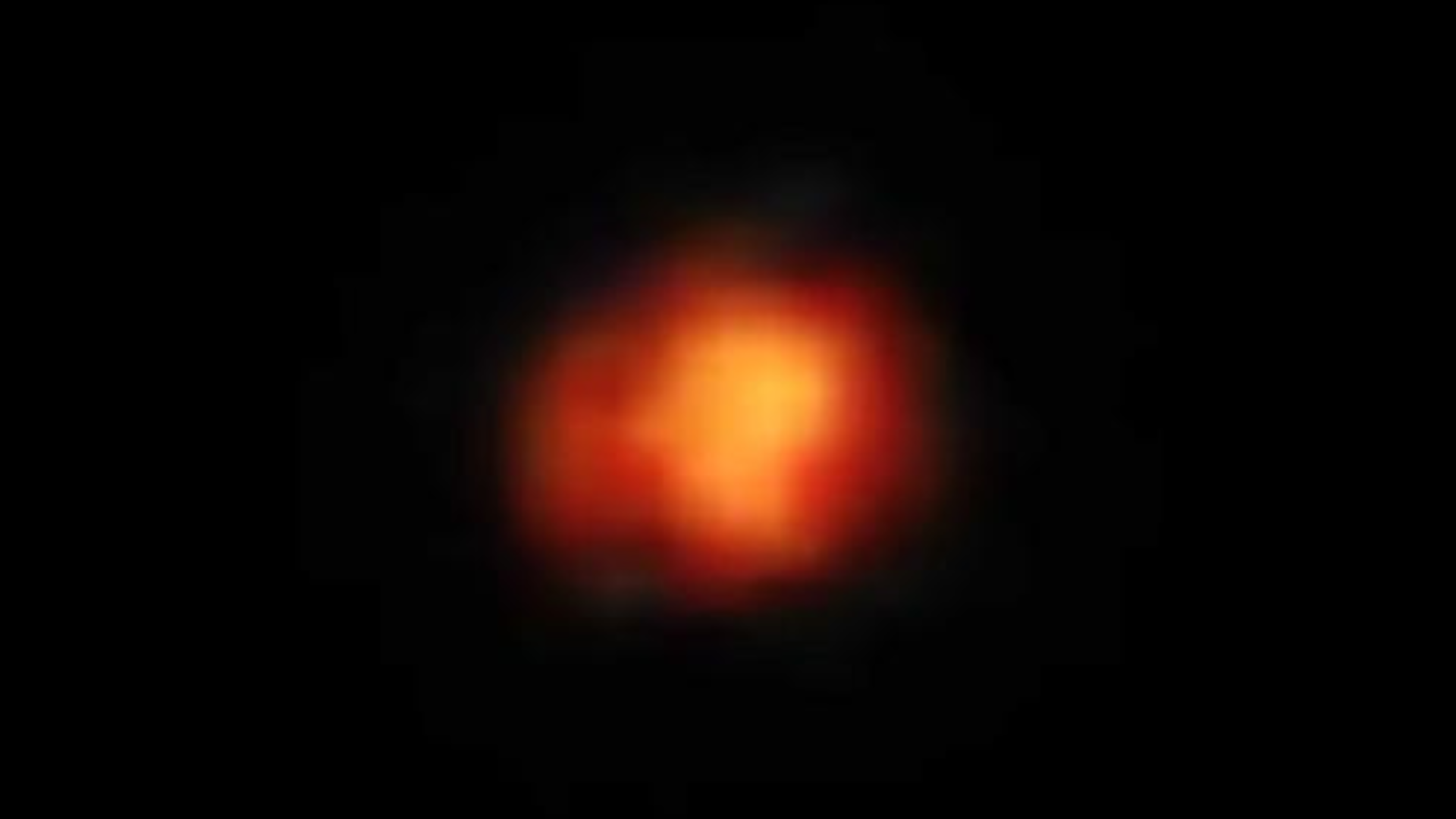
This blurry orange blob, imaged by the JWST in summer 2022, is known as Maisie's galaxy, and in August 2023, astronomers announced that it's one of the earliest galaxies ever discovered. The galaxy seems to have existed when the universe was only 390 million years old, making it one of the four earliest galaxies ever seen.
"This was the undiscovered frontier where we really didn't know how the galaxies formed or what they looked like until we went and looked for them with the JWST," study author Steven Finkelstein, an astronomer at the University of Texas at Austin, told Space.com.
Read more here: James Webb Space Telescope confirms 'Maisie's galaxy' is one of the earliest ever seen
9. The most distant supermassive black hole ever seen

In July, astronomers announced that the JWST had detected the most distant active supermassive black hole ever seen, whose host galaxy formed just 570 million years after the Big Bang. However, this ancient black hole has puzzlingly low mass — just 9 million times that of the sun. For comparison, most of these cosmic beasts weigh over 1 billion solar masses. "It is still difficult to explain how it formed so soon after the universe began," the researchers said.
Read more here: James Webb Space Telescope detects most distant active supermassive black hole ever seen
10. The JWST rediscovers an ancient ghostly galaxy
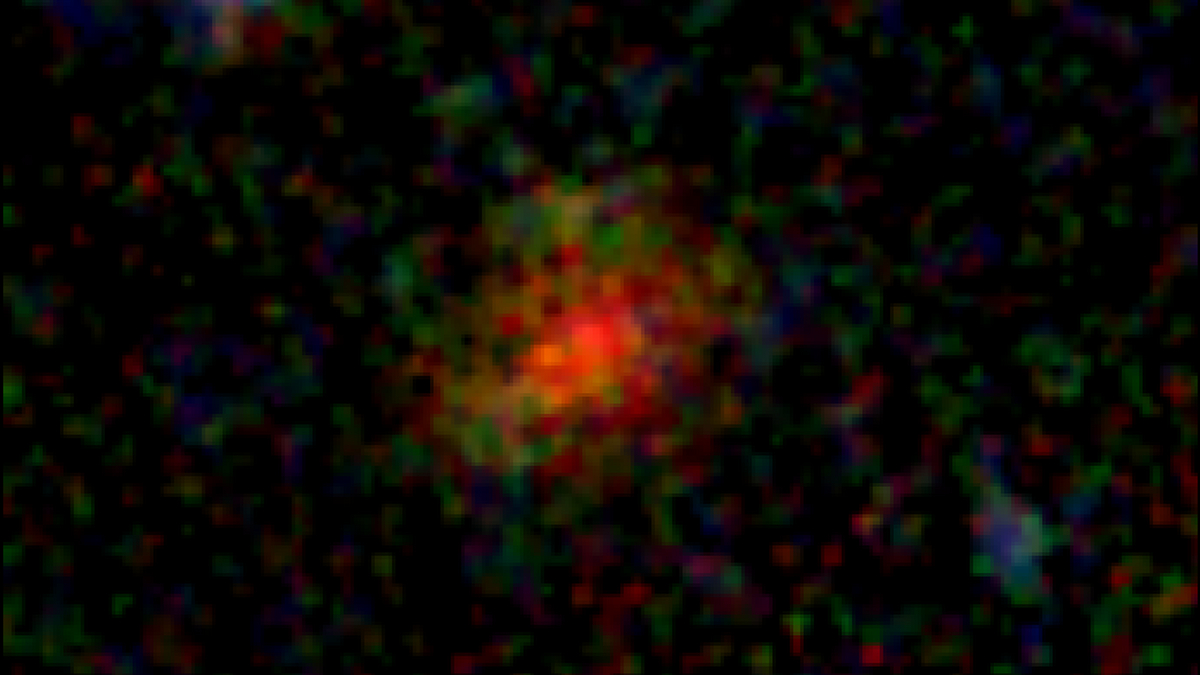
The JWST's sighting of a fuzzy galaxy embedded deep inside a dust cloud has been of recent interest to astronomers, in part because it is seen as it appeared just 900 million years after the Big Bang, when the very first stars were appearing. But astronomers are also interested in the science lessons this galaxy is waiting to reveal, "potentially telling us there's a whole population of galaxies that have been hiding from us," Jed McKinney, an astronomer at the University of Texas at Austin, said in a statement.
Read more here: James Webb Space Telescope pierces through dust to find an ancient ghostly galaxy
11. The JWST spots 3 possible fabled "dark stars"
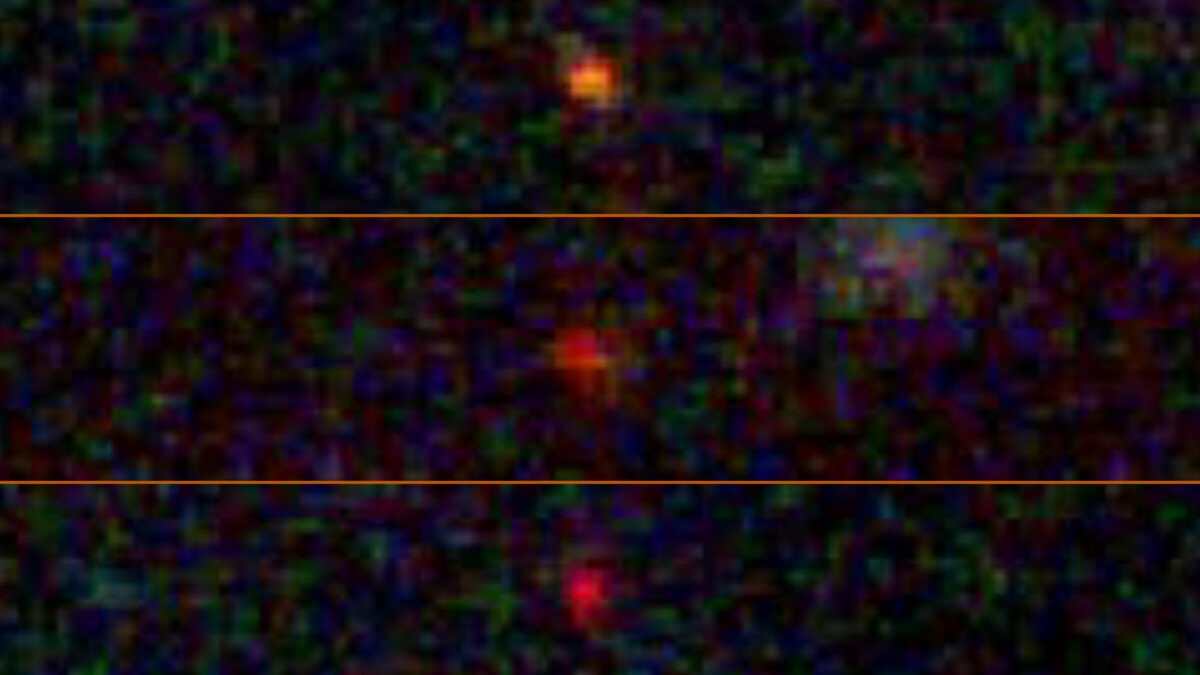
In July, astronomers reported that the JWST had found three bright objects that could possibly be "dark stars," a reference to the Grateful Dead song "Dark Star." The "stars" were originally tagged as galaxies by the JWST in 2022.
"When we look at the James Webb data, there are two competing possibilities for these objects," Katherine Freese, a professor of physics at The University of Texas at Austin, said in a statement. "One is that they are galaxies containing millions of ordinary, population-III stars. The other is that they are dark stars. And believe it or not, one dark star has enough light to compete with an entire galaxy of stars."
Astronomers think these types of stars are powered by dark matter, the elusive substance that makes up 85% of the matter in our universe but is invisible to telescopes. If dark stars really do exist, their presence would help solve the puzzling observations of how a very young universe grew to host so many large galaxies as observed by the JWST, researchers say.
Read more here: Do fabled 'dark stars' actually exist? James Webb Space Telescope spots 3 candidates
12. The earliest galaxies looked surprisingly similar to our Milky Way
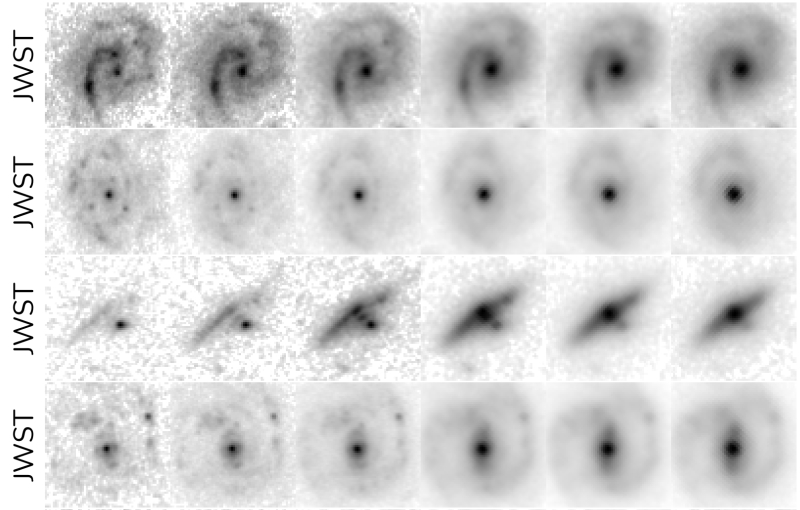
Galaxy evolution theories have predicted that the earliest galaxies in our universe were too young to flaunt any noticeable features, like spiral arms, bars or rings; astronomers have thought these more complex structures began appearing about 6 billion years after the Big Bang. But this year, the JWST found that galaxies with such delicate shapes could have existed as early as 3.7 billion years after the Big Bang.
"Based on our results astronomers must rethink our understanding of the formation of the first galaxies and how galaxy evolution occurred over the past 10 billion years," study co-author Christopher Conselice, a professor of astronomy at the University of Manchester in the U.K., said in a statement.
Read more here: James Webb Space Telescope reveals ancient galaxies were more structured than scientists thought
Join our Space Forums to keep talking space on the latest missions, night sky and more! And if you have a news tip, correction or comment, let us know at: community@space.com.

Sharmila Kuthunur is a Seattle-based science journalist focusing on astronomy and space exploration. Her work has also appeared in Scientific American, Astronomy and Live Science, among other publications. She has earned a master's degree in journalism from Northeastern University in Boston. Follow her on BlueSky @skuthunur.bsky.social
-
George² I'm still waiting, several (3-4-5) huge 9-meter optical-only (so that they don't need special cooling units and a whole year of pre-settings) space telescopes with monolith main mirror, arranged in an interferometric configuration. I believe that bringing them to the intended position where they will operate would not be difficult using the SpaceX Starship version 2. With such a configuration, the visual capabilities of our civilization would increase 100X over that using the JWST. It would literally revolutionize astronomy.Reply









